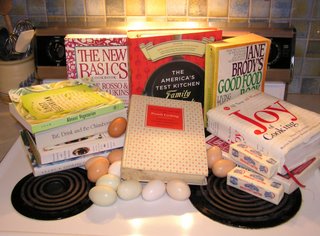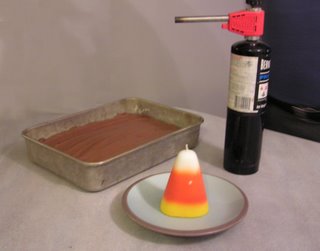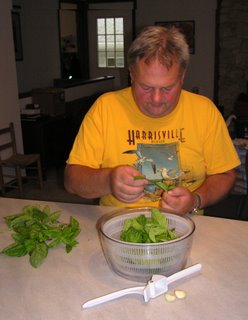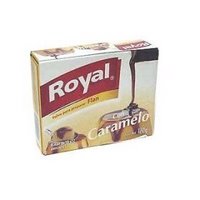This is not a photo of a recipe. It's a vintage picture of my husband and son at Niagara Falls. I wanted to put a picture in this post, but the food wasn't particularly photogenic. My kid is. ;-)

I love the smitten kitchen site. (Until just now I've been misreading it as smitten kitten. Huh.) I made one of her salads the other day, with escarole and hazelnuts, and the whole family gobbled it down. The pickled red onion was kind of like eating firecrackers, but we liked it. (In very small quantities.) Escarole is new to me. It's a pain to prepare, and there seems to be an awful lot of waste, but it tasted pretty good. In a rare move, I followed the recipe exactly, which involved finding the escarole and hazelnuts (and the pecorino romano cheese, for that matter) in the local grocery store. Even an employee didn't know if they had hazelnuts, so I had to search for them. (Baking aisle. Not with nuts in the produce section.)
Anyway, I'm not sharing that recipe, because it's hers, she does it better, and it's only a click away. (Mom, see the underlined word "salads" above? Click on it.) What I made was a bastardized version of her roasted butternut squash and couscous recipe. I trust that it is delicious, but my pantry doesn't have preserved lemons in it, and while I do have some fresh parsley (rare for me in winter, because I hate to pay for what grows plentifully in my garden), "fresh" doesn't quite describe its condition after a week in the fridge.
Also my kids have what I'll call a midwestern sense of taste. They love bland. They love spicy-hot. But strong flavors are another thing. The Girl dislikes parsley, and the Boy only recently accepted onions into his repertoire. So I was pretty sure the original recipe wouldn't fly at my table. (Too bad. I would have loved to make it as written.)
1 3/4 cups Israeli couscous (the large kind)
a butternut squash
a large sweet onion
olive oil
salt and pepper
grapes
Set oven to 475 F (246 C). Put racks on upper and lower thirds of oven.
Peel and cut the squash into 1/4" dice (standard quilt seam allowance). That's the hardest part.
Cut the onion in the shape/size you want the pieces. I cut it in quarters, then thin slices.
Cover a baking sheet with foil, the nonstick kind if you have it. Lay out another piece of foil.
Put some olive oil in a big bowl, just a slosh. Add the squash and toss till coated. Spread the squash on the foil-covered baking sheet. Salt and pepper it.
Put the onion in the greasy bowl, adding more olive oil if necessary. Spread the onion on the foil sheet. Salt and pepper it. Fold up edges to make an envelope.*
Put squash on top rack, and tuck onion packet wherever it fits.
At this point, set a big pot of salted water on to boil. While the vegetables cook, boil the couscous until tender, about 10 minutes. Drain. Also while the vegetables are cooking, wash a handful or two of grapes and cut them in half. They've got to be really tasty grapes, not sour.
Bake vegetables until squash is soft and sweet but not mushy, about 25 minutes. Turn around the baking pan halfway through if you remember. Turn the foil packet upside down while you're at it. Remove from oven.
Taste the squash. If it's soft enough but hasn't gotten that roasted sweet flavor (it happens), drizzle a tiny bit of honey over it.
Combine the couscous, squash, onion, and grapes in a bowl. Toss to mix. Add more salt and pepper if necessary.
This makes a bland, barely sweet, comforting dish. The original is probably a lot more flavorful. Oh. I was going to squeeze some lemon juice over it, but forgot.
*I suppose you could put the onion on another sheet, but my oven isn't big enough for two baking sheets.

























